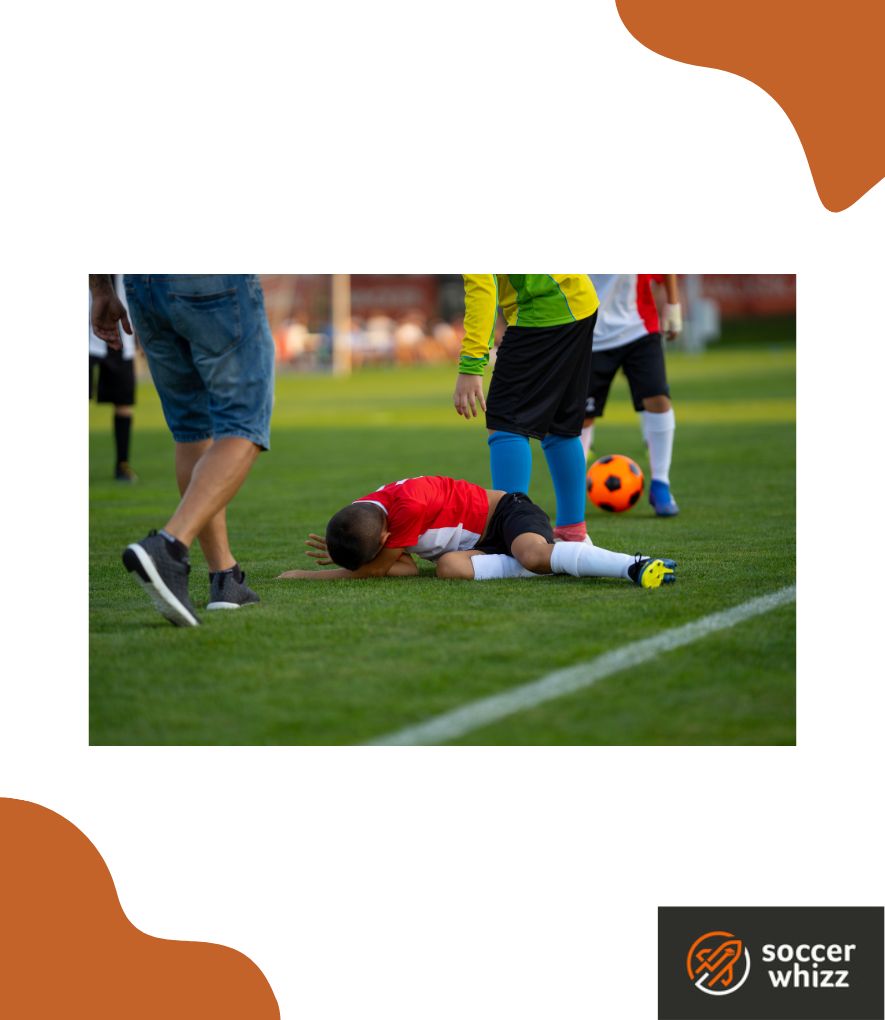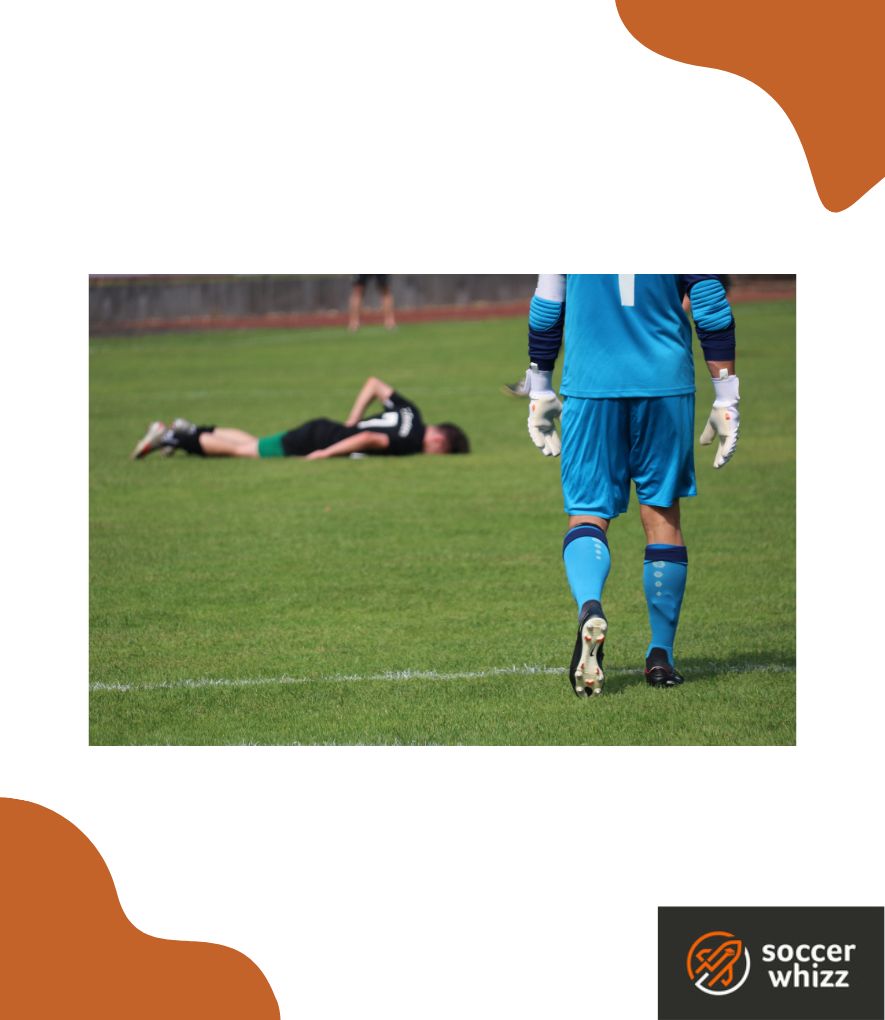Soccer, known for its intense and dynamic nature, is a sport that demands skill, strategy, and fair play.
Yet, amidst all the fervor on the field, there are moments when players find themselves in situations that lead to collisions.
Enter the concept of fouls in soccer, a fundamental aspect that influences the flow and outcome of matches.
Understanding what constitutes a foul and its implications is essential for players, coaches, and fans alike.
Within this article, we will delve into the intricacies of fouls in soccer, exploring their definitions, types, consequences, and the impact they have on the game.
What is considered a foul in soccer?
In soccer, a foul refers to an infraction or violation committed by a player that goes against the rules of the game. These infractions can occur during various situations on the field and can range from minor offenses to more severe transgressions.

The laws of the game, as established by the Federation Internationale de Football Association (FIFA), outline the criteria for what is considered a foul in soccer.
Some common actions that are considered fouls include:
- Tripping or attempting to trip an opponent;
- Kicking or attempting to kick an opponent;
- Pushing, holding, or pulling an opponent;
- Charging into an opponent recklessly or using excessive force;
- Jumping into an opponent dangerously;
- Striking or attempting to strike an opponent;
- Handling the ball intentionally (except for the goalkeeper within their own penalty area); and
- Impeding the progress of an opponent (e.g., obstructing their movement).
How many types of fouls are there in soccer?
In soccer, there are generally six main types of fouls.
These fouls are categorized based on the severity of the offense and the resulting consequences.
The following list expounds on each type of foul and the actions that result in the foul calls:
1. Foul throw ins
Failing to put the ball back into play correctly is an action that is considered a foul in soccer.

What happens in such a situation is that ball possession is handed over to the other team, who get the chance to resume play from a throw in themselves.
Have a read of our article detailing what foul throws in soccer are for more insight.
2. Direct free kick fouls
Direct free kick fouls are more serious infractions and typically involve physical contact or actions that impede an opponent’s progress.
These fouls result in a direct free kick or a penalty kick, depending on the location and circumstances of the offense.

Examples of direct fouls include infringements such as: tripping; pushing; and intentional kicking.
3. Handball fouls
In soccer, a handball foul occurs when a player deliberately handles or touches the ball with their hand or arm.
The intentional use of the hand or arm to control or manipulate the ball is considered a violation of the rules.
Inside the penalty area, goalkeepers are exempt from this rule due to the nature of their position, but outside the penalty area they are subject to the same handball rules as other outfield players.
4. Indirect free kick fouls
Indirect fouls are less severe in nature and usually involve technical or tactical infractions that do not involve physical contact with an opponent.
Indirect fouls result in an indirect free kick, where the ball must touch another player before a goal can be scored.

Examples of indirect fouls include impeding the goalkeeper’s release of the ball and playing in a dangerous manner.
5. Cautionable fouls
Cautionable fouls, also known as yellow card offenses, are infractions that warrant a caution from the referee.
These fouls are typically more serious in nature but are not severe enough to result in a direct red card and a player’s expulsion from the game.
When a cautionable foul occurs, the referee shows the offending player a yellow card as a formal disciplinary action.
Examples of cautionable fouls include reckless challenges, dissent, persistent infringement, time-wasting, unsporting behavior and delaying the restart of play.
6. Sending off fouls
Sending-off fouls, also known as red card offenses, are the most serious infractions that result in a player being expelled from the game.

When a red card offense occurs, the referee shows the offending player a red card as a severe disciplinary action.
Examples of sending-off fouls include serious foul play, violent conduct, spitting, denying an obvious goal-scoring opportunity and a second cautionable offense.
What is the largest number of fouls committed in a soccer game?
The soccer game with the largest number of fouls recorded in history occurred on the international stage between Mexico and Paraguay.

During the 1986 World Cup, a notable match between Mexico and Paraguay gained infamy for its staggering 78 fouls committed.
An interesting fact about this game is that only 5 players from both teams received yellow cards and no red cards were issued by the referee.
This game served as a stark reminder of the increasingly defensive nature of soccer and the demanding task faced by referees during that era, who blew their whistles with an intensity reminiscent of later decades’ rave culture.
Which soccer players are most notorious for committing fouls?
While soccer has seen its fair share of players known for their aggressive style of play and frequent fouls, it’s important to note that the reputation of players can vary over time and across different eras.
Here are a few notable examples of players who have been considered notorious for committing fouls:
Gerardo Bedoya
With a staggering total of 46 red cards, the Colombian defensive midfielder stands out as one of the footballers with an extensive record of dismissals.

Remarkably, even in his senior coaching debut in March 2016, he was shown a red card and sent off after only 21 minutes.
Cyril Rool
The former French football midfielder was remembered for his aggressive playing style, blind tackles and being at the centre of brawls on the pitch.

He amassed 25 red cards during the course of his professional playing career.
Sergio Ramos
Renowned for his tenacious style of play and indomitable spirit, the former Real Madrid defender has established himself as a prominent figure in the world of soccer.

Holding the record for the most red cards in La Liga history – with a remarkable tally of 24 – he has showcased his relentless determination on the field.
Additionally, in the prestigious UEFA Champions League tournament, Ramos has earned four red cards, securing his position as the player with the highest number of cards and jointly the most red-carded player in the history of the competition.
Are fouls in soccer dangerous?
Fouls in soccer can range in severity, and while some fouls may be relatively harmless, others can indeed be dangerous.
The level of danger depends on various factors, including the intensity of the foul, the manner in which it is committed, and the vulnerability of the player involved.
Certain fouls, such as minor infringements like a slight push or an accidental trip, may not pose significant danger to players.
However, more serious fouls, such as reckless tackles, excessive force, or intentional actions targeting vulnerable areas like the head or legs, can lead to severe injuries.
These injuries can include fractures, ligament damage, concussions, or other serious trauma.
Related reading – dangerous play in soccer
What is not considered a foul in soccer?
Certain actions and incidents are not considered fouls and are allowed within the rules of the game.
These include things like:
- shoulder-to-shoulder challenges;
- fair tackles;
- accidental contact; and
- offsides
Concluding thoughts
In conclusion, fouls play a significant role in the dynamics of soccer, impacting the flow, fairness, and safety of the game.
They occur when players infringe upon the established rules and regulations, leading to penalties and consequences.
Fouls can range from minor infringements to more severe and dangerous actions, with varying levels of impact on the players involved.
By understanding what constitutes a foul and the potential risks involved, players, coaches, and spectators can gain a deeper appreciation for the importance of upholding the spirit of the game while promoting sportsmanship and respect.
For more related content on some of soccer’s most important concepts, check out the articles listed below:
If you enjoy the content that I create and would like to buy me a coffee, then I’d really appreciate it!
Any money that I earn through this donation will be re-invested into more content for this website.
Additionally, by sending in a donation you’ll also receive a copy of my recently released 190+ page eBook on Soccer Ball Care, as well as be subscribed to our mailing list where you’ll be regularly informed on the latest developments concerning the Soccer Whizz blog.
- Future Icons: Europe’s Emerging Midfield Maestros Set for Glory - December 4, 2023
- Kickstarting a Revolution: How Soccer Transformed the United States Over the Last Four Years - October 7, 2023
- 4-1-4-1 Soccer Formation [Analysis] - September 23, 2023

